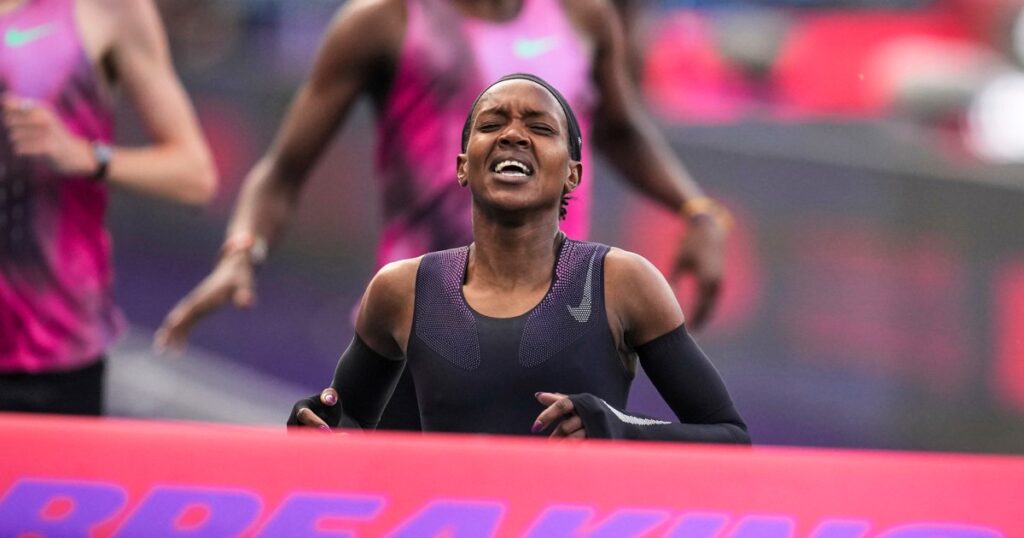
PARIS – In a groundbreaking attempt on Thursday, Faith Kipyegon ran the fastest mile ever recorded by a woman, clocking in at 4:06.42. Despite her remarkable achievement, she fell short of the elusive sub-four-minute milestone by 6.42 seconds.
Breaking: Kipyegon’s Record-Breaking Run
Kipyegon, a three-time Olympic gold medalist in the 1,500 meters and widely regarded as the greatest middle-distance runner of all time, set the new record in Paris. Her performance surpassed her previous world record of 4:07.64, achieved in 2023. However, the time will not be officially recognized as a world record due to the extraordinary pacing assistance provided during the event.
Immediate Impact
The race, organized by Nike and Kipyegon’s sponsor, featured a complex system of pacemakers, including male pacers, to aid her attempt. The event was held at Stade Charléty in front of a limited audience. Kipyegon was the only woman to have ever run a mile in under 4:10, and her effort aimed to bridge the 7.64-second gap to history.
Key Details Emerge
To optimize her performance, Kipyegon ran alongside 13 pacers who executed a carefully choreographed strategy to minimize wind resistance. Nike also developed a specialized speed suit and sports bra, along with a new set of spikes, to enhance her aerodynamics.
Industry Response
Her coach, Patrick Sang, observed that Kipyegon appeared “a bit nervous” on the morning of the race, as noted on a Nike-organized broadcast. Despite the nerves, the scientific community had not ruled out the possibility of a sub-four-minute run. Earlier this year, researchers published a paper modeling a race scenario in which Kipyegon could potentially achieve a time of 3:59.37.
“Is it really going to be a failure if she runs, you know, 4:01, 4:02? It’s still going to be a big deal,” said Shalaya Kipp, a postdoctoral research fellow at the Mayo Clinic and former Olympic distance runner.
By the Numbers
- 4:06.42 – Kipyegon’s record-setting mile time
- 13 – Number of pacers assisting her
- 2:01.7 – Her halfway split time
- 3:01.84 – Her time with one lap to go
What Comes Next
Nike’s strategy did not involve consulting the researchers behind the sub-four model. Instead, pacers were strategically placed around Kipyegon to create a “pocket” of reduced drag. This approach mirrors Nike’s previous efforts, such as the 2017 attempt to help Eliud Kipchoge break the two-hour marathon barrier.
Background Context
The attempt in Paris was reminiscent of Kipchoge’s initial sub-two-hour marathon attempt, which, although unsuccessful, paved the way for his eventual success. Kipp compared Kipyegon’s run to this earlier “moonshot” race, emphasizing the importance of incremental progress in women’s running.
“That’s how Eliud Kipchoge’s first sub-two [marathon] attempt was. It wasn’t perfect, but it lowered the standard, and it made us realize if we can get closer, we can do it,” Kipp told NBC News.
Expert Analysis
As the sporting world reflects on Kipyegon’s historic run, experts suggest that her performance signifies a step forward in understanding the potential of female athletes. The race demonstrated the impact of scientific strategies and technological advancements in pushing the boundaries of athletic achievement.
The implications of Kipyegon’s run extend beyond her personal achievements. It highlights the ongoing evolution of women’s athletics and the potential for future breakthroughs in the sport.






